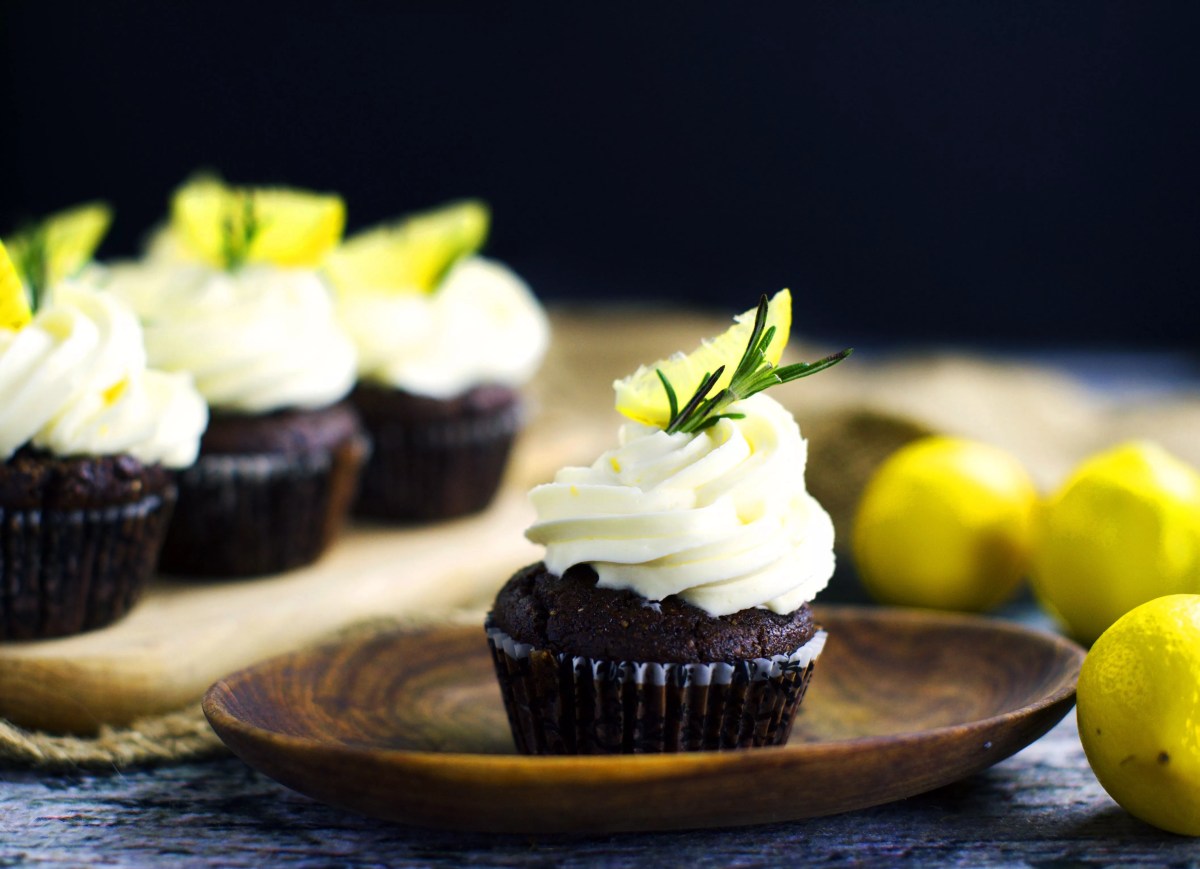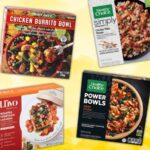Indulge your sweet tooth without the guilt! This comprehensive guide unveils the secrets to crafting delectable, low-carb cupcakes that are as visually stunning as they are delicious. Imagine fluffy, moist cakes, bursting with flavor, adorned with creamy, decadent frostings. We’ll explore a world of low-carb flour alternatives, innovative sweetener choices, and expert baking techniques, transforming your kitchen into a haven of guilt-free baking bliss.
From selecting the perfect low-carb flours and sweeteners to mastering the art of frosting and decoration, we’ll navigate every step of the process. Discover how to avoid common pitfalls like dryness and crumbliness, ensuring each cupcake is a masterpiece of texture and taste. Prepare to embark on a culinary adventure, where deliciousness meets dietary needs, resulting in cupcakes that are both satisfying and surprisingly healthy.
Ingredient Selection & Substitutions
Crafting perfect low-carb cupcakes requires careful consideration of ingredients. The right choices will yield a delightful texture and sweetness without compromising the low-carb goal. Substituting traditional ingredients with their low-carb counterparts demands an understanding of their unique properties and how they interact within the batter.
Low-Carb Flour Alternatives and Their Impact on Texture
The choice of low-carb flour significantly impacts the final texture of your cupcakes. Almond flour, coconut flour, and oat flour (ensure it’s truly low-carb) are popular options, each offering a distinct characteristic. Almond flour produces a tender, slightly crumbly cupcake, similar in texture to a traditional cake. Coconut flour, being more absorbent, results in a denser, chewier cupcake. Oat flour (if using a low-carb version) provides a slightly more cake-like texture, though often a bit less tender than almond flour. The key is to understand these differences and choose the flour that best suits your desired outcome.
Low-Carb Sweeteners and Their Effects on Sweetness and Moisture
Sweeteners are crucial for flavor and moisture. Erythritol, stevia, and monk fruit are popular low-carb choices. Erythritol offers a clean, almost sugar-like sweetness with minimal aftertaste and contributes to moisture. Stevia, while intensely sweet, can sometimes have a slightly bitter aftertaste if not used carefully. Monk fruit offers a milder sweetness and blends well with other sweeteners. The best approach often involves combining sweeteners to achieve the desired sweetness and balance any potential off-flavors. For example, a blend of erythritol and stevia might create a perfectly balanced sweetness with good moisture retention.
Low-Carb Cupcake Batter Recipes Using Different Flour Alternatives
Several recipes demonstrate the versatility of different low-carb flours.
Almond Flour Cupcakes
One recipe uses 1 ½ cups almond flour, ½ cup erythritol, 4 large eggs, ½ cup melted coconut oil, 1 teaspoon baking powder, and ½ teaspoon vanilla extract. The result is a tender, slightly crumbly cupcake with a delicate almond flavor. The coconut oil adds moisture and richness.
Coconut Flour Cupcakes
Another recipe utilizes 1 cup coconut flour, ½ cup erythritol, 4 eggs, ¼ cup melted coconut oil, 1 teaspoon baking powder, and ½ teaspoon vanilla extract. The higher absorption rate of coconut flour necessitates less liquid. The resulting cupcake is denser and chewier than the almond flour version, but still enjoyable. The coconut flavor is more pronounced.
Suitable Fat Alternatives for Moist and Rich Cupcakes
Fats play a crucial role in achieving moist and rich low-carb cupcakes. Coconut oil, avocado oil, and butter (used sparingly due to its higher carb content) are excellent choices. Coconut oil imparts a subtle coconut flavor and contributes to moisture. Avocado oil adds richness without a strong flavor, making it a versatile option. Butter, while higher in carbs, adds a classic richness and flavor if used in moderation. The type of fat chosen will influence both the flavor and the texture of the final product. The combination of fats can also be explored to achieve a desired result. For instance, a blend of coconut oil and avocado oil can provide a balanced moisture and richness without overpowering the other flavors in the cupcake.
Frosting & Decoration Options
Transforming your low-carb cupcakes from delicious to dazzling requires the perfect frosting and a touch of creative flair. The right frosting not only enhances the flavor but also provides the ideal canvas for stunning decorations. Choosing the right sweetener and mastering basic piping techniques are key elements in achieving a professional-looking finish.
Low-Carb Frosting Recipes
Several delicious and surprisingly easy low-carb frosting options exist, each offering a unique flavor and texture. These recipes utilize alternative sweeteners to achieve sweetness without the carb load.
- Cream Cheese Frosting: This classic offers a tangy, rich, and creamy texture. Imagine a cloud-like frosting, smooth and billowy, with a subtle hint of lemon. A simple recipe involves softened cream cheese, powdered erythritol or monk fruit sweetener, and a splash of vanilla extract. The texture is luxuriously smooth, perfect for swirling or piping.
- Coconut Cream Frosting: For a tropical twist, coconut cream frosting provides a delightful sweetness and a light, airy texture. Picture a fluffy, white frosting with subtle coconut flakes visible throughout, lending a delicate sweetness and a hint of tropical aroma. This frosting is made using full-fat coconut milk, a low-carb sweetener, and a touch of vanilla extract. The texture is less dense than cream cheese frosting, ideal for a lighter look.
- Chocolate Avocado Frosting: This surprisingly decadent frosting uses avocado for creaminess and richness, masking its presence completely. Envision a deep, dark chocolate frosting, glossy and intensely flavorful, with a velvety smooth texture that melts in your mouth. The recipe combines mashed avocado, unsweetened cocoa powder, a low-carb sweetener, and a pinch of salt. The avocado provides a surprisingly creamy texture, without any hint of its natural flavor.
Low-Carb Sweetener Comparison in Frosting
The choice of low-carb sweetener significantly impacts the final taste and texture of your frosting. Each sweetener possesses unique characteristics.
- Erythritol: Erythritol offers a clean, slightly cooling sweetness and blends well in frostings, providing a similar texture to traditional sugar frostings. It’s generally well-tolerated by most individuals.
- Monk Fruit Sweetener: Monk fruit sweetener boasts a significantly higher sweetness level than erythritol, requiring less volume. It may have a slightly aftertaste for some, which can be mitigated by combining it with erythritol.
- Stevia: Stevia offers intense sweetness but can sometimes have a lingering bitter aftertaste that isn’t ideal for all palates. It’s often best used in combination with other sweeteners to balance the flavor.
Creative Decoration Ideas
The possibilities for decorating low-carb cupcakes are endless. A few creative ideas include:
- Piped Rosettes and Swirls: Imagine a cupcake adorned with swirls of cream cheese frosting, delicately piped rosettes, creating an elegant and sophisticated look. The contrast of the white frosting against the cupcake’s color adds visual appeal.
- Fruit Garnishes: Fresh berries, such as raspberries or blueberries, provide a vibrant pop of color and a refreshing taste. Picture a cupcake topped with a few glistening berries, arranged artfully for a simple yet elegant touch.
- Chocolate Shavings and Sprinkles: A dusting of finely grated dark chocolate or low-carb sprinkles adds texture and visual interest. Imagine a cupcake crowned with a generous scattering of dark chocolate shavings, creating a rich, decadent appearance.
- Nut Toppings: Finely chopped nuts, such as pecans or almonds, provide a delightful crunch and a sophisticated touch. Envision a cupcake elegantly sprinkled with finely chopped toasted pecans, adding a touch of rustic charm.
Piping Techniques for Frosting Designs
Mastering basic piping techniques elevates your cupcake decoration game. Start with a simple star tip for rosettes and swirls. Practice on parchment paper before applying your skills to the cupcakes. A steady hand and consistent pressure are key to creating beautiful, uniform designs. Different piping tips yield diverse effects, allowing for intricate designs and personalized touches. Consider watching tutorials online for visual guidance.
Recipe Variations & Flavor Combinations
The beauty of baking lies in its adaptability. A basic low-carb cupcake recipe can be transformed into a myriad of delicious flavors and textures with simple substitutions and additions. This section explores three distinct flavor profiles and provides guidance on incorporating fruits, nuts, and adjusting the recipe for mini cupcakes. The impact of various extracts and flavorings will also be discussed.
Chocolate Decadence Cupcakes
These intensely rich cupcakes boast a deep, dark chocolate flavor that will satisfy even the most ardent chocolate lover. The secret lies in using high-quality unsweetened cocoa powder and a touch of espresso powder to enhance the chocolate notes. The batter is moist and intensely flavorful, offering a delightful contrast to the light and airy texture.
Recipe: Combine 1 cup almond flour, ½ cup unsweetened cocoa powder, 1 tsp baking powder, ½ tsp baking soda, ¼ tsp salt, 1/3 cup erythritol or your preferred low-carb sweetener, 2 large eggs, ¼ cup melted unsalted butter, 1 tsp vanilla extract, 1 tsp espresso powder, and ¼ cup unsweetened almond milk. Bake at 350°F (175°C) for 18-20 minutes.
The addition of espresso powder deepens the chocolate flavor, adding a subtle bitterness that balances the sweetness perfectly. Vanilla extract provides a warm, comforting aroma and taste that complements the chocolate beautifully. Experimenting with different types of cocoa powder (Dutch-processed versus natural) will yield variations in the chocolate’s intensity and bitterness.
Lemon Zest Cupcakes
These bright and zesty cupcakes offer a refreshing alternative to richer chocolate options. The vibrant lemon flavor is achieved through the use of fresh lemon zest and juice, creating a delightful burst of citrus in every bite. The texture is light and fluffy, perfectly balanced by the tartness of the lemon. The subtle sweetness allows the lemon to truly shine.
Recipe: Combine 1 cup almond flour, 1 tsp baking powder, ¼ tsp salt, ½ cup erythritol or your preferred low-carb sweetener, 2 large eggs, ¼ cup melted unsalted butter, 2 tbsp lemon juice, 1 tbsp lemon zest, and 1 tsp vanilla extract. Bake at 350°F (175°C) for 15-18 minutes.
The fresh lemon zest provides a fragrant and intense lemon flavor, while the lemon juice adds moisture and acidity, preventing the cupcakes from becoming overly sweet. Vanilla extract subtly enhances the lemon flavor, adding depth and complexity. Using a combination of lemon zest and lemon extract can intensify the lemon flavor profile even further.
Vanilla Bean Bliss Cupcakes
These classic vanilla cupcakes are surprisingly simple yet incredibly elegant. The use of high-quality vanilla bean paste creates a luxurious and intensely flavorful cupcake. The delicate vanilla aroma fills the kitchen during baking, promising a treat that is both sophisticated and comforting.
Recipe: Combine 1 cup almond flour, 1 tsp baking powder, ¼ tsp salt, ½ cup erythritol or your preferred low-carb sweetener, 2 large eggs, ¼ cup melted unsalted butter, 1 tbsp vanilla bean paste, and ¼ cup unsweetened almond milk. Bake at 350°F (175°C) for 18-20 minutes.
The vanilla bean paste, with its tiny specks of vanilla bean, provides a more intense vanilla flavor than extract alone. The creamy texture of the paste also adds richness to the batter. Experimenting with different types of vanilla extract (Madagascar Bourbon, Tahitian) will result in varying flavor profiles, ranging from warm and woody to floral and fruity.
Low-Carb Cupcakes with Added Fruits and Nuts
Incorporating fruits and nuts into the basic low-carb cupcake recipe adds texture and flavor complexity. For example, adding chopped pecans or walnuts provides a delightful crunch, while blueberries or raspberries offer a juicy burst of sweetness.
Preparation: Begin with your preferred low-carb cupcake recipe. Gently fold in ½ cup of your chosen chopped nuts or berries during the final stages of mixing. Be careful not to overmix, as this can lead to tough cupcakes. Adjust baking time as needed, as added ingredients may affect baking time. For example, adding blueberries might slightly increase the baking time, while nuts might slightly decrease it.
The addition of fruits or nuts introduces contrasting textures and flavors. The slight moisture from the berries adds to the overall moistness of the cupcake, while the nuts provide a delightful textural contrast. Consider the natural sweetness of the fruits and adjust the amount of added sweetener accordingly.
Mini Low-Carb Cupcakes
Adapting the basic recipe for mini cupcakes is straightforward. Simply use mini muffin tins and reduce the baking time. The smaller size means faster baking times and more even cooking.
Adaptation: Use mini muffin tins and fill each cup about ¾ full. Reduce baking time by approximately 5-7 minutes, or until a toothpick inserted into the center comes out clean. The exact baking time will depend on your oven and the specific recipe used.
Mini cupcakes are ideal for portion control and offer a delightful presentation. They are perfect for parties or as a sweet treat. The smaller size allows for greater experimentation with different flavor combinations and toppings without excessive consumption.
Step-by-Step Recipe & Visual Guide

Creating perfect low-carb cupcakes requires precision and attention to detail. This step-by-step guide, complete with visual descriptions, will walk you through the process, ensuring delicious and guilt-free indulgence. Remember to use high-quality ingredients for the best results.
Dry Ingredient Preparation
Begin by picturing a pristine countertop, ready for action. On it, you’ll find almond flour, a light beige powder, subtly nutty in aroma; coconut flour, a finer white powder, with a slightly sweeter scent; and a generous spoonful of baking powder, a fine white granule. These are the foundation of our low-carb cupcakes. Carefully measure out 1 ½ cups of almond flour, ¼ cup of coconut flour, and 1 teaspoon of baking powder. Whisk them together gently in a large bowl, creating a fluffy cloud of dry ingredients, ready to receive the wet components. The image is one of gentle blending, the powders mingling seamlessly.
Wet Ingredient Combination
Now, imagine a separate bowl, containing the heart of the recipe. Here, four large eggs, their yolks a rich golden hue, meet a generous half cup of melted unsalted butter, a liquid pool of golden clarity. Add ½ cup of granulated erythritol (or your preferred low-carb sweetener), its fine white crystals dissolving into the butter and egg mixture. A teaspoon of vanilla extract, its dark brown liquid a fragrant promise, is stirred in to enhance the flavor profile. Picture the creamy mixture, smooth and rich, taking shape. Using a hand mixer, beat this until it’s light and fluffy, a vibrant emulsion of golden yellows and creamy whites.
Combining Wet and Dry Ingredients
Gently pour the wet ingredients into the dry ingredients. Imagine the delicate stream of the wet mixture cascading into the waiting dry ingredients. Using a spatula, fold the wet ingredients into the dry ingredients, being careful not to overmix. Overmixing develops gluten, which can make the cupcakes tough. Picture the batter, smooth and thick, being carefully poured into prepared cupcake liners. The batter should have a consistency similar to thick pancake batter, neither too runny nor overly stiff.
Baking and Cooling
Carefully place the filled cupcake liners into a preheated oven at 350°F (175°C). Picture the cupcakes baking, their tops gently browning, filling the kitchen with a delightful aroma. Bake for 20-25 minutes, or until a toothpick inserted into the center comes out clean. Let them cool completely in the muffin tin before frosting. The image shows a tray of perfectly baked cupcakes, golden brown and slightly domed, ready for their sweet transformation.
Frosting Application
Once the cupcakes are cool, it’s time for frosting! Imagine a bowl of luscious low-carb frosting, perhaps a creamy vanilla or a decadent chocolate. Using a piping bag or a knife, carefully frost each cupcake, creating a smooth, even layer. The visual is one of delicate artistry, the frosting transforming the simple cupcakes into elegant treats.
Decoration
Finally, add your chosen decorations. This could range from sprinkles to fresh berries, chocolate shavings, or even a dusting of powdered erythritol. The cupcakes are now ready to be enjoyed! Picture the finished product: a collection of perfectly frosted and decorated low-carb cupcakes, a testament to your baking skills and a delightful treat for all.
Tips for Consistent Results
- Use room temperature eggs and butter for optimal mixing and emulsification.
- Don’t overmix the batter, as this can result in tough cupcakes.
- Ensure your oven is properly preheated to avoid uneven baking.
- Let the cupcakes cool completely before frosting to prevent melting.
- Experiment with different flavor extracts and frostings to create unique cupcake variations.
Creating perfect low-carb cupcakes is now within your reach. This guide has equipped you with the knowledge and techniques to bake delightful treats that satisfy your cravings without compromising your dietary goals. Picture the scene: a table laden with miniature culinary masterpieces, each cupcake a testament to your baking prowess. The vibrant colors of the frostings, the delicate swirls, and the enticing aromas—all culminating in a truly unforgettable baking experience. So, gather your ingredients, preheat your oven, and get ready to embark on this rewarding baking journey.
Popular Questions
Can I use almond flour exclusively?
While almond flour works well, it can result in a denser cupcake. Blending it with other low-carb flours, like coconut flour, often yields a lighter texture.
How long can I store low-carb cupcakes?
Properly stored in an airtight container at room temperature, low-carb cupcakes can last for 3-4 days. For longer storage, freeze them for up to 2 months.
What are some creative frosting alternatives?
Beyond cream cheese frosting, explore options like whipped coconut cream, mascarpone cheese frosting, or even a rich avocado chocolate frosting for unique flavor profiles.
Can I add fresh fruit to low-carb cupcakes?
Yes, but use sparingly as fruits contain natural sugars. Berries like raspberries or blueberries work well in smaller quantities. Consider adding them to the batter or using them as a garnish.


